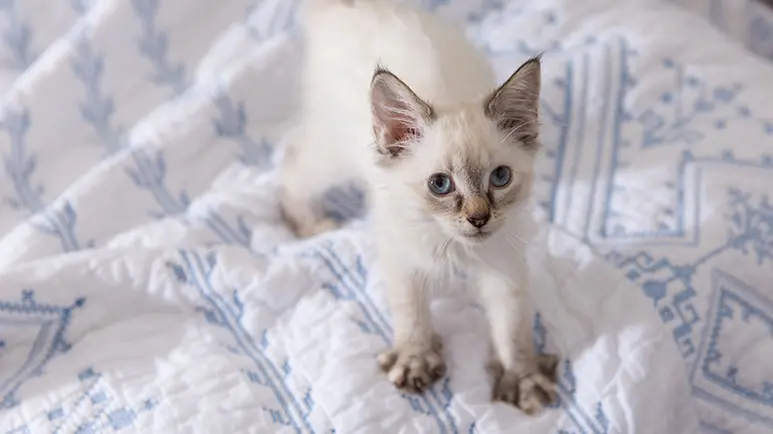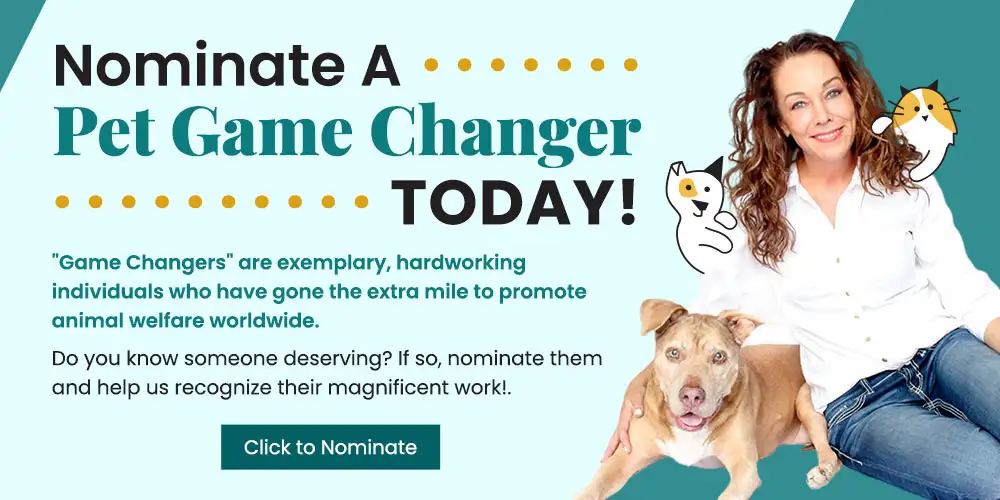This Strange Feline Action Means She’s Craving Affection
Most people would interpret this as an insult. Yet it's your cat's quirky way of asking for affection. You could even call it a handshake in reverse. Plus, what pawing (typical of newborn kitties) means when adult cats still do it. Find out what your cat really means by his actions.

STORY AT-A-GLANCE
- Newborn kittens knead their moms in order to stimulate the flow of milk from her mammary glands
- Adult cats knead for contentment, stress relief, scent marking, or to mimic nest-building, which is done by cats in the wild
- Your cat may stick her behind in your face as a way of asking for affection and bonding time, a sort of “handshake in reverse”
Editor's Note: This article is a reprint. It was originally published June 12, 2015.
Cats are mysterious, often independent creatures, but that doesn’t mean they don’t interact with their owners. On the contrary, cats use multiple methods of communication and will actually follow your lead in terms of how much involvement the two of you share.1 As felines, however, cats tend to display certain behaviors that may seem peculiar to us humans.
One of the most common is “kneading,” which is when your cat pushes her paws against a soft surface. Many cats will also purr while kneading, which suggests this activity is pleasurable for her. So is kneading an ingrained instinct or more of a hobby that some cats enjoy?
Why Does My Cat Knead With Her Paws?
Newborn kittens knead their moms in order to stimulate the flow of milk from her mammary glands. This is an instinctual behavior that many cats continue into adulthood. It was once believed that adult cats who still knead may have been taken from their mothers too soon, but this has been largely debunked since the majority of adult cats knead.
One of the key theories for why adult cats knead is for contentment or stress relief. Cats seem to enjoy the behavior, perhaps because it reminds them of soothing moments nursing as a kitten.
Wild cats also build nesting places out of grass and leaves, to both rest and give birth in, and it’s likely they knead the grasses into place. Your domestic kitty may be continuing on with this “wild” behavior. Simon King, host of BBC’s Big Cat Diary, believes kneading is a remnant of kitten-like behavior:
“Over thousands of years of domestication we have encouraged cats to maintain much of their kitten-like relationship, with ourselves playing the role of surrogate parents.”
Another theory is that cats knead to mark their territory. Your kitty has scent glands in her paws, and her scent will be left behind on any surface she spends time kneading. So, this behavior might be a way for her to let others know where she’s been. Likely, however, it’s a combination of all of the above.
If your cat likes to knead on your lap, place a thick blanket there first so her nails don’t dig into your skin. Keeping her claws trimmed short will also help. Some cats tend to become obsessive about kneading, and may try to knead frequently while suckling a stuffed toy or blanket. If the behavior seems obsessive, try to distract her with a toy or healthy treat.
Why Does My Cat Stick Her Butt in My Face?
Another feline peculiarity … your cat may jump up on the desk where you’re working and promptly turn her backside toward your face. Don’t be offended; instead think of it as a “handshake in reverse.”2
One of the ways cats communicate is by rubbing objects with their heads, ears, and tails. This leaves their chemical signature behind. Cats who live together often rub each other in a friendly fashion, possibly as a way of forming a “colony scent” that lets everyone know they all belong. When you pet your cat, you’re also depositing your scent on your cat, which is a social act in kitty language.
So, when your cat sticks her behind in your face, it’s most likely a way of asking for affection and bonding time. As reported by Vet Street:3
“Instead of ‘sticking her behind in your face,’ your cat may very well be asking you for affection or reaffirmation of your social bond by soliciting attention and petting. When you pet your cat, you are also depositing your odors from the glands on your hand and picking up her odors. Cats regard this as being social.
When cats rub alongside each other, they are facing in opposite directions and usually end up standing with their hind ends positioned toward one another. Since we do not rub bodies with our cats but use our hands instead, this is probably why they end up directing their posteriors toward us.”
Sources and References
- Paw Nation August 7, 2014
- 1 Schweiz Arch Tierheilkd. 1991;133(2):63-70
- 2,3 Vet Street October 1, 2014










